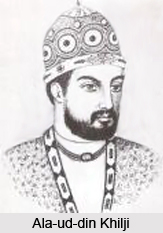 History of Nanded district goes back a long way. Nanded was formerly known as Nanditat which is confirmed by the copper plate found at Vasim. The mention of Nanded is found in the Lilacaritra, a treatise written about 700 years ago by Mhaimbhatta. It gives the description of the idol of Narsinha in the town. It is said that during the Puranic days, the Pandavas of Mahabharata travelled through Nanded district. Nanded has witnessed a great succession of dynastic rule. The rulers of the Nanda dynasty ruled here for generations. Nanded district and the adjoining areas were also ruled over by the Andhrabhartyas or Satavahana dynasty during the first century A.D. During the fourth century A.D., Kandhar was the capital of the King Sogadev. That the Rashtrakuta kings also ruling at Kandhar is established by the inscription of Krishnadev alias Khandardev found at Khandar. Another inscription at Arahapur shows that some dynasty of the Rashtrakutas was also ruling over Degloor. Hottal, a place in Nanded district was the capital of the Chalukya dynasty, then the Kakatiya dynasty followed by the Yadavas of Devagiri, who were the last of the Hindu dynasties to have ruled this part. During the very first invasion by the Muslims, this territory was subjugated to them and after a few years it became a part of the fief of Malik Kafur, the general of Ala-ud-din Khilji.
History of Nanded district goes back a long way. Nanded was formerly known as Nanditat which is confirmed by the copper plate found at Vasim. The mention of Nanded is found in the Lilacaritra, a treatise written about 700 years ago by Mhaimbhatta. It gives the description of the idol of Narsinha in the town. It is said that during the Puranic days, the Pandavas of Mahabharata travelled through Nanded district. Nanded has witnessed a great succession of dynastic rule. The rulers of the Nanda dynasty ruled here for generations. Nanded district and the adjoining areas were also ruled over by the Andhrabhartyas or Satavahana dynasty during the first century A.D. During the fourth century A.D., Kandhar was the capital of the King Sogadev. That the Rashtrakuta kings also ruling at Kandhar is established by the inscription of Krishnadev alias Khandardev found at Khandar. Another inscription at Arahapur shows that some dynasty of the Rashtrakutas was also ruling over Degloor. Hottal, a place in Nanded district was the capital of the Chalukya dynasty, then the Kakatiya dynasty followed by the Yadavas of Devagiri, who were the last of the Hindu dynasties to have ruled this part. During the very first invasion by the Muslims, this territory was subjugated to them and after a few years it became a part of the fief of Malik Kafur, the general of Ala-ud-din Khilji.
With the advent of the Bahamani dynasty, the southern country or the Deccan was divided into four parts or subhas, and Nanded was included in the Subha of Telangana. The famous Vazir or the Prime Minister of the Bahamanis, Mahmud Ghawan, divided the Kingdom into subhas with Nanded forming part of Mahur Balaghat. He resided at Nanded and Kandhar for many days and the Vazirabad part of Nanded town was established by him. During this time, Nanded was the capital of the district of Telangana. When Aurangzeb was appointed the Subhedar of the Deccan, Bidar was the Headquarters of the Subha and it was named as Ahmadabad. The Subha of Bidar was divided into six sarkars and 76 mahals and Nanded was one of the Sarkars of that subha. In 1708, the year following the death of Aurangzeb, his son, accompanied by Guru Gobind Singh, the tenth spiritual leader of the Sikhs came over to Nanded, his permanent abode. It was he who preached amongst the Sikhs that there need not be any spiritual leader for them and they should take Granthsaheb as their leader. A monument has been constructed at a place where he breathed his last. A Gurudwara has also been constructed there. It is known as Takhat Sachkhand Shri Hazur Abchalnagar Sahib Gurudwara.
It became a part of the Hyderabad Kingdom in 1725 when the Nizam permanently opted for the Deccan and continued to be so till 1947. With India getting freedom and the consequent police action against Hyderabad State, the district forming part of the Marathwada region of Hyderabad state became part of the bilingual Bombay State and consequent upon the creation of Maharashtra, the district continues to form part of the state of Maharashtra.



















